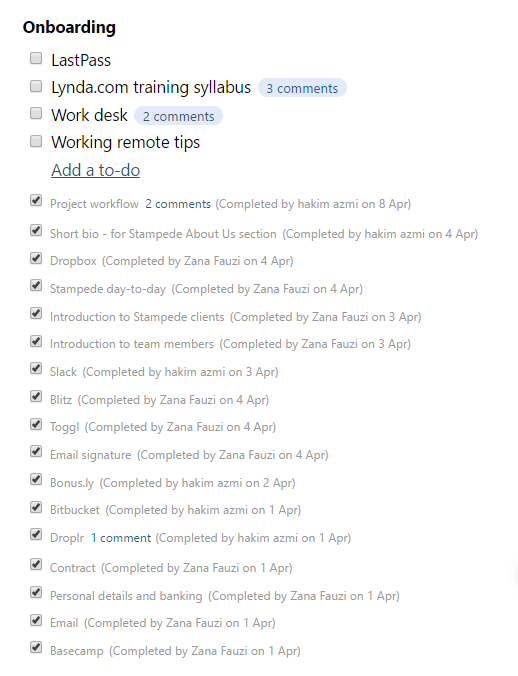Culture is more so than a buzzword being thrown around by business leaders now. It stands to us as a foundation for our team’s happiness, and every wonderful thing will follow if we get the foundation right. Ever notice how some teams seem to function better than others no matter who is on the team? They get their culture right from the start.

As in the words of Tony Hsieh, the CEO of Zappos:
Our number one priority is company culture. Our whole belief is that if you get the culture right, most of the other stuff like delivering great customer service or building a long-term enduring brand will just happen naturally on its own.
With teams in a physical workplace, most companies tend to disregard the exercise of building culture with the assumption that it will naturally happen. That should not happen with remote teams, when everyone is distributed across places and timezones. It is hard to gauge everyone’s level of happiness and satisfactory when you could not see them face-to-face, therefore, setting things right as much as possible on the first try is crucial.
Here are six things we have learned on the journey of building the culture for a remote team.
- Hire the right people
- Use onboarding for new hire success, and quick assessment
- Invest in technology and tools for work and fun
- Organise in person meetups
- Provide perks & professional development
- Be transparent and cultivate trust
Hire the right people
A client once told us, that every one in our team has this Stampede DNA that makes us gel well together as colleagues and friends. What is this unspoken Stampede DNA that she speaks of? We ourselves don’t know, but upon years of hiring, we know what kind of people we do not want.
At Stampede, we hire based on this order: good attitude, willingness to learn & skills more than possessing the skills, followed by the rest. We understand that it’s tempting to bring on board someone with the technical skills to immediately get down to work. But any skill can be trained, but things like personality and temperament have a huge effect on how someone will meld into your team and perform for your clients.
Hiring for attitude ultimately opens up a wider pool of candidates. Also because the technical requirements for business are constantly evolving, you can’t anticipate the hard skills you will need several years out. Which is you should always be on the lookout for someone who is hungry to learn and know more when you are hiring.
Onboarding & assessments
We take great care when we are welcoming a new Stampede-ian onboard. We want to make sure that their first day leaves a good impression (and with better impression the next few days and weeks, because we are overachievers that way), that everything they need is ready and most importantly, they will not be bored or be left wondering what they should be doing on the first day.
In order to make this happen, we have checklists on what the new Stampede-ian should be provided, briefed and walked through on the first day.

On top of this, in order to ease them into our culture, they are also included in internal meetings and some client meetings for observations. This shall also help us to assess how well they get along with the team and clients, and how well they perform in social situations.
Another thing we learned is that to assess new hires as frequent as possible. Do not wait until the end of the probation to provide feedback. Keep a spreadsheet of weekly observation of how they perform, and discuss the progress every week on how they are doing and how we can help them to perform more should there be problems.
For the hires requiring technical skills (coding and programming), we assign weekly coding assignments on top of real projects and encourage them to ask for feedback as soon as they have problems. This way, we are able to see their initiative to problem-solving, and that it is okay for them to get help if they are stuck.
Tools for work & fun
A physical office develops its own personality through inside jokes, shared experiences and a collaborative environment where you can just walk to someone’s desk and do all of these. However, when it comes to a remote office, we do not have such luxury, so we shall make do with something similar.
We spoke in Part 1 of how much we use tools to automate our work as well as to motivate each other in a remote setting. When we speak to the team members who had worked in a physical office before, they admitted they get more things done than before and our inside jokes are pretty legendary too.
Here are some of the tools we have been using.

- Slack: Virtual office and gif ping-pong
- Basecamp: Project management and client communication
- ResourceGuru: Scheduling
- Bitbucket: Hosting version control repositories
- Google Apps: File sharing, to-dos and many more
- Dropbox: File sharing
- DoneDone: Issue tracking for maintenance projects
- LastPass: Password management
- Toggl: Time tracking and employee timesheet
- Bonus.ly: Peer-to-peer bonuses program
In person meetups
To be honest, we troll each other in Slack every single day it is almost we are in the same office together. So what happens when we gather everyone around for a couple of days at least once a year? Peak action potential happens 🙂

The in-person meetup includes loads and loads of food, jamming session, LAN party and also so much trolling and laughing like no other. Just an extension of our virtual office in Slack.

Perks & professional development
Earlier this year we have started to implement more and more perks to our full time Stampede-ians:
- Everyone in the team gets 3-month free membership of gyms of our choice.
- 2-week paid leave on top of the compulsory leave
- Every team member gets to propose any local or regional conferences they want to join, and most of the time, we let them go and pay for their expenses too!

We learned that by doing this, the team members return to work more motivated and always ever ready to share their experiences!
Another new thing we have done recently is subscribing to online learning programs. They are really convenient and everyone can learn at their own pace and time. Now every team member has a Lynda account of which they can use to delve more into their related skill sets, both technical and soft skills.
Transparency and trust
Since we are a distributed team, we learned to trust our colleagues in order to get the job done. But in order to do so, everyone is responsible to make sure they are worthy of trust. There is no one in the team to hover around each other to make sure everyone does the right things, so it starts with the first point – hire the right people.
What’s wonderful is when you learned to trust your team members, oftentimes they will amaze you. With the trust, they continue to feel empowered and do good things and beyond. Give your team members the benefit of the doubt and you will learn that most people just want to do amazing things as you do!
Conclusion
This is by no means a definitive list. As we grow as a remote team and as remote working gets even more popular, we shall learn more and more things on how to build culture around a remote working team. When we find out interesting things, we shall be sure to share with you.
To recap:
- Hire the right people
- Use onboarding for new hire success, and quick assessment
- Invest in technology and tools for work and fun
- Organise in person meetups
- Provide perks & professional development
- Be transparent and cultivate trust
If you are also part of the remote team, what are the things you have learned about building the culture for a distributed team?
While you are here, please also take a look at Part 1: Running a Remote Team.
